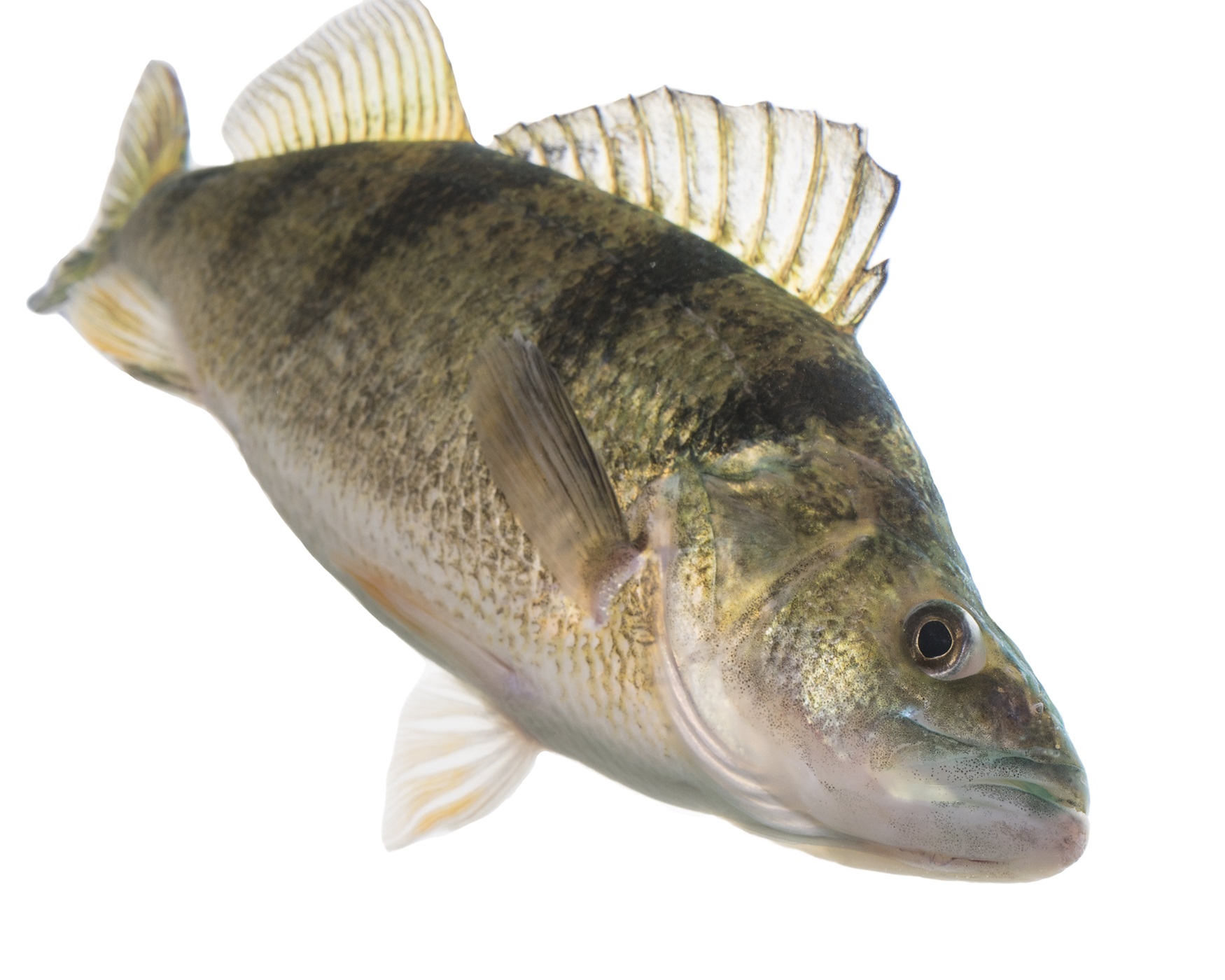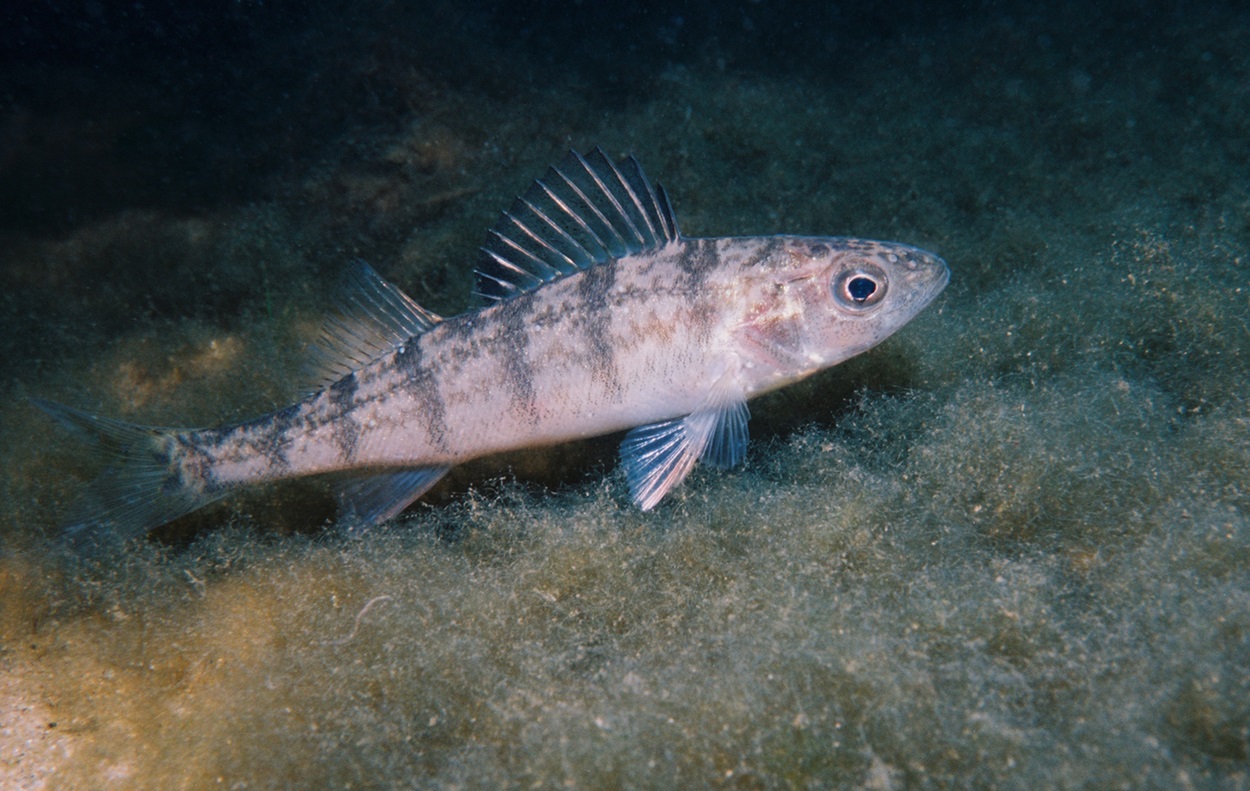The yellow perch (Perca flavescens) is a quintessential species of perch. Yellow perch is one of the most widespread species of perch in Canada. They are closely related to the sauger and walleye.

Description
Yellow perch are distinguished from other members of their warm- to cool-water community by their short, stubby, hunch-backed body; two dorsal fins, of which the first has spiny rays; rather large mouth; bright yellow to green eyes; and lateral pattern of seven green to brownish, tapered bars over a bright yellow to greenish undercoat.
The largest adult yellow perch are usually 20–30 cm long, weighing 170–340 g. Specimens as large as 35 cm have been taken in eastern Canada, and one taken in Quebec weighed almost two kilograms. Individuals can survive to nine years of age.

Reproduction
Yellow perch spawn in spring (April–May) in southern Canada, as late as July in the North. No nest is built, but the unique, transparent, gelatinous, accordion-folded strings of eggs are looped over vegetation. These strings can be as long as two meters and as heavy as one kilogram, and contain an average of 23,000 eggs. The large numbers of almost transparent young are significant in the diets of other important fishes.
Distribution and Habitat
This North American species has a wide native distribution in Canada, from Nova Scotia (excluding Cape Breton), across Ontario, northward through most of Manitoba, Saskatchewan and Alberta, southern British Columbia (introduced) and north to Great Slave Lake, Northwest Territories.
Parasites
Yellow perch are regularly hosts to parasites such as yellow grub (in flesh) and blackspot (on skin), neither of which infect humans. Less frequently, perch carry the broad tapeworm, which can infect humans if raw or poorly cooked fish are eaten.
Economic Role
In Canada, the yellow perch species is classed as a sport and commercial fish. In spring, numerous larger individuals, migrating to spawning grounds, attract anglers. The white, flaky flesh makes yellow perch a prominent commercial species in the Great Lakes. Both young and adults form schools of 50–200 individuals, making them attractive to anglers and commercial fishermen.
The commercial catch in Canada in 1993 was 6,466 tonnes, yielding a value of $23.4 million.


 Share on Facebook
Share on Facebook Share on X
Share on X Share by Email
Share by Email Share on Google Classroom
Share on Google Classroom




